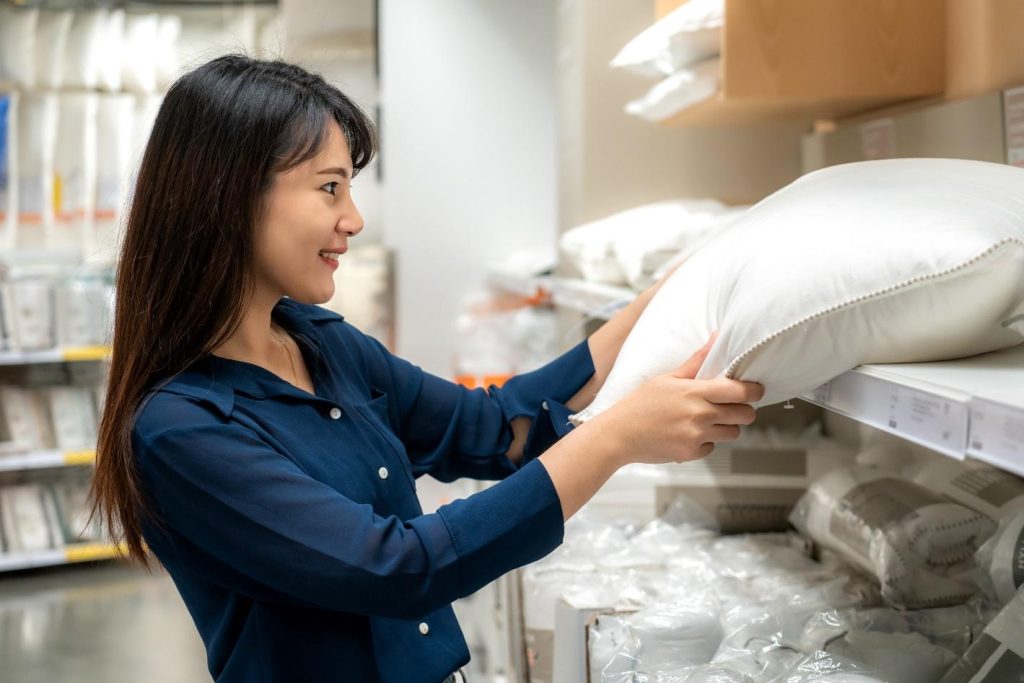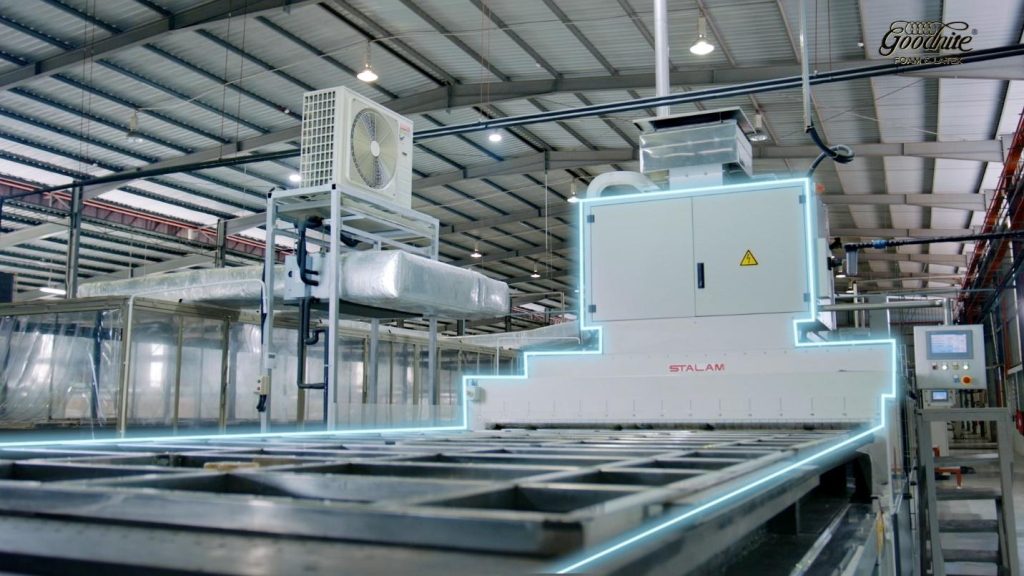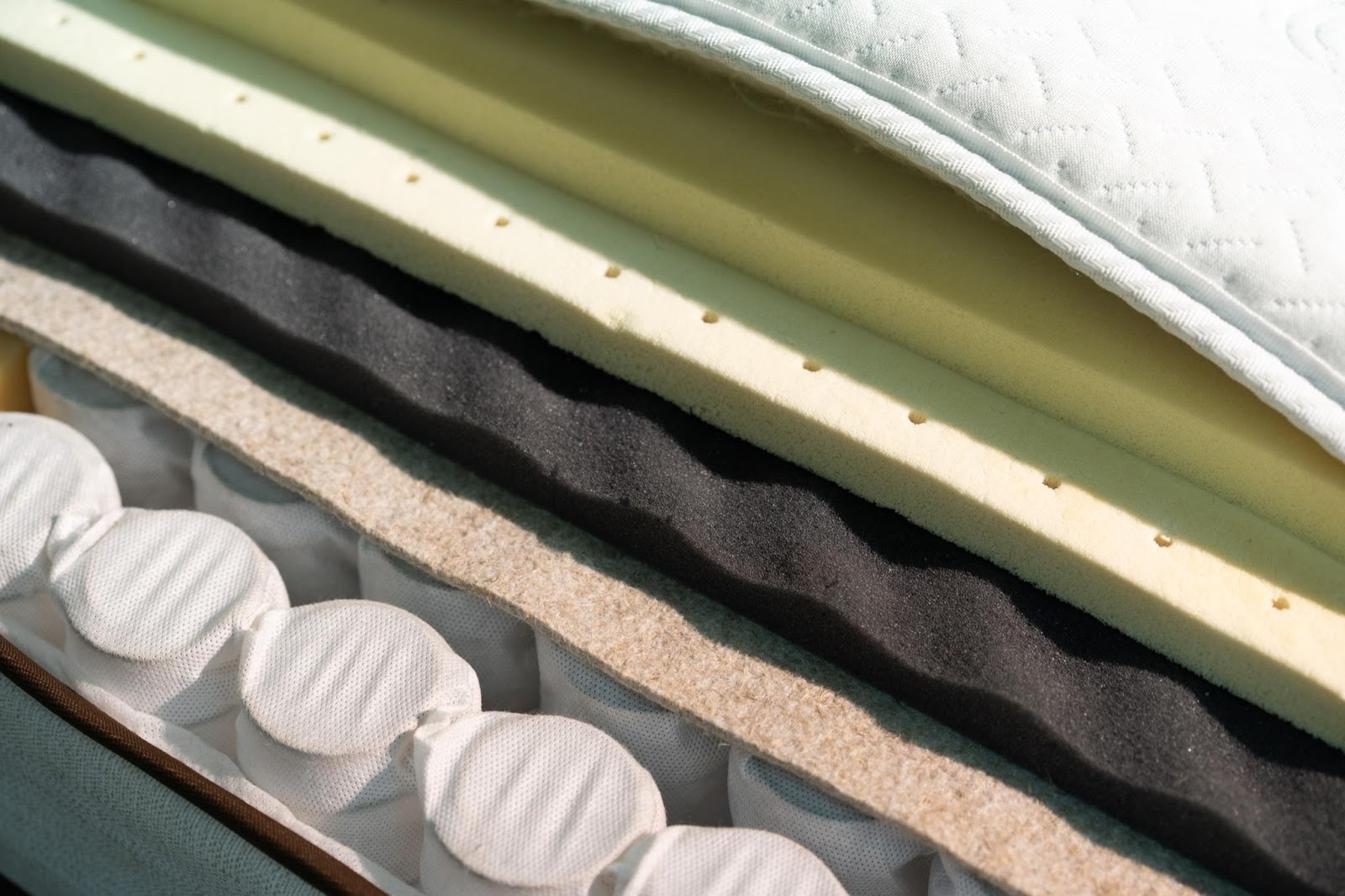The materials used in manufacturing your pillows, mattresses, and sofas, such as latex vs memory foam, heavily influence how they feel (cloudy, jelly-like, or springy). They also determine the longevity of your manufactured products, how much they cost, and how much they may be viewed as high-quality value.
Memory foam and latex foam are globally two of the most often utilised materials in high-quality sofas, pillows, and mattresses. But how exactly do memory foam and latex stand out from one another?
Since the beginning of time, numerous kinds of foam have been commercialised. A broad spectrum of industries have popularly used latex and memory foam for their products until today. For instance, they are used by companies that produce medical equipment, aeroplane cushions, bedding, and more.
If you’re constantly at sixes and sevens, whether your products demand latex or memory foam, read further! We can help you make a wise selection of the right material for your manufactured products.
This “latex vs memory foam” guide will walk you through the details of latex and foam and why they are universally used in manufacturing, especially in pillows.
What Exactly Are Latex Pillows?
One of the properties of a latex pillow is that it is essentially extracted from rubber trees through the process of vulcanisation.
It is also known that latex pillows carry unique characteristics like natural elasticity, breathability, and hypoallergenic properties. All of these will naturally enable your product to offer an exclusive level of comfort.
Generally, the latex used can be broken down into two types: Dunlop and Talalay. The earlier Dunlop technology has a firmer feel and is typically more inconsistent overall. Meanwhile, Talalay gives off an airier sensation as it goes through two additional steps during manufacturing.
What Are Memory Foam Pillows?
Memory foam pillows are an advanced innovation in latex pillows. They are composed of several materials, like polyurethane foam, and additional chemicals for viscoelastic properties, as they were initially designed for astronauts.
Unsurprisingly, most top bedding companies, including Goodnite, utilise some form of memory foam in their pillows and mattresses. Nowadays, manufacturers have understood that it can provide a remarkable solution for consumers suffering from back discomfort or joint problems.
Additionally, various memory foam pillows with new functional options are currently available on the market. This includes Traditional, Gel-infused, and Plant-based memory foam, each with unique cooling characteristics and environmental effects.

Latex vs Memory Foam: Side-By-Side Comparison
Comfort Levels
When it comes to comfort levels, latex is at least seven times airier compared to any other foam.
On the other hand, memory foam offers only one level of firmness for each pillow, ranging from medium firm to firm.
Heat Retention
Latex is an excellent thermal insulation as it is made up of natural elements. It does not retain heat, regardless of the surrounding temperature.
Allergy Considerations
Latex naturally repels dust mites, mould, and other allergies as it is antifungal and antibacterial.
On the other hand, memory foam is made of synthetic materials. It could potentially draw in allergens like dust mites, which can be dangerous to those with allergies.

Latex vs Memory Foam: How to Choose Between The Two
Individual Sleeping Habits and Preferences
It’s important to take into account your targeted consumers’ sleeping habits and preferences while offering them the best pillows.
- Side and back sleepers may prefer memory foam pillows to reduce strain on the hips and shoulders significantly. The height of latex pillows is often ideal for these sleeping postures.
- Stomach sleepers prefer latex pillows, which are soft, thin and can properly align their spines.
- Combination sleepers might prefer latex as it is easier to reposition.
Health Considerations
Latex does good work for pressure relief; however, it only contours the neck and body to a moderate extent. Hence, it is second-best in terms of health.
In contrast, memory foam pillows can greatly alleviate body pain as the material conforms to contour the consumer’s body and supports typical areas that often get uncomfortable.
Budget Considerations
Latex is substantially more expensive than memory foam, depending on the brand and supplier.
On the other hand, memory foam is available at various pricing points, considering that each product needs a particular type to perform a distinct function.
Having said that, latex is far more long-lasting; therefore, the difference in long-term cost is less significant.
Recommendations for Different Sleepers
Finding the right material to produce a valuable product can sometimes be daunting. Don’t sweat it! We have shortlisted a few criteria that might match your consumer’s sleeping styles and preferences.
Below are the lists (latex and memory foam, respectively) that may assist you in navigating the variety of alternatives while looking for an ideal material for your products:
Latex might be the better choice if your products are intended for:
- Adolescents;
- Hot sleepers who need a naturally cool substance to restore cool temperature in pillows;
- Sleepers who are eco-conscious, as latex helps reduce biodegradable litter;
- Sleepers who are allergic to dust or micro-allergens;
- Sleepers who appreciate the tactile qualities of a memory foam pillow but prefer different levels of firmness (firm to soft); or
- Sleepers who need moderate support for their neck and body.
On the other hand, memory foam might be the better choice for your products if they are intended for:
- Sleepers that have certain medical conditions requiring heat retention properties in their pillows;
- Sleepers that need firm bedding materials;
- Sleepers that need extra support in pillows for their neck and shoulders when sleeping;
- Sleepers who need padding to help with persistent discomfort, problems and alignment; or
- Sleepers who wish to prioritise their health, wellness and improve sleep quality.
So, there you have it!
As you can see, latex and memory foam individually cater to different problems and unique preferences. Are you able to choose which material, latex or memory foam, is most suitable for your manufactured goods?

RF-Tec™ Technology: The Future of Latex Production
Are you familiar with RF-Tec™ in latex production? The term “RF-Tec” stands for radio frequency technology. It uses electromagnetic waves and dielectric heating instead of obsolete steam heating and drying methods to vulcanise latex from the inside out.
In conjunction, your end product is bound to be more robust, uniform, and consistent through this radio frequency technology. With RF-Tec, rest assured it will be soft to the touch and excellent in terms of comfort on all counts.
It has a consistent cell structure according to the ground-breaking RF-Tec™ technology, making it an exceptional comfort layer. Plus, the foam structure enables great elasticity and incredibly high tensile strength, offering great value to your manufactured goods.
Above all, RF-Tec™ technology is a process known to be highly effective, considering it lowers energy use. It is on par with Goodnite’s unwavering pursuit of CSR initiatives and commitment to ecologically friendly production.
It is safe to say that the innovative RF-Tec™ method has undeniably raised the bar for latex bedding materials in the modern days.
Our Final Thoughts
With this “latex vs memory foam” discussion, we hope we can provide you with a good grounding on which material is best for your manufactured products and consumers.
You can now create even better or ‘heaven-like’ bedding, blankets, sofas, and pillows that best meet your consumer’s demands. Nevertheless, choosing that option ultimately comes down to the advantages you value most.
Visit Goodnite Foam & Latex, a trusted Malaysian-based manufacturer specialising in foam and latex, to get your finest supplies of latex and memory foam materials!
We have expanded our expertise beyond bedding materials to include essential furniture for over 30 years. Trust us; we can guarantee the top-notch qualities of our products through warranties and free deliveries. Head to our website for more information!
